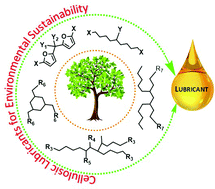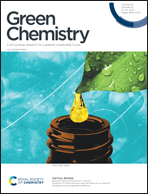Synthesis of (hemi)cellulosic lubricant base oils via catalytic coupling and deoxygenation pathways
Abstract
The past decade has witnessed a significant growth in bioproduct development due to the strong interest in creating a more diverse energy supply, environmental sustainability, and a carbon neutral bioeconomy. The initial biorefinery strategy, which focused mainly on the production of low carbon number drop-in bioproducts, has recently shifted its focus on the production of high carbon number and high performance bioproducts with unique properties and value propositions. One such product is lubricant base oil (LBO), which represents over $150 billion global lubricant market and is used for various industrial, automotive, marine, metal-working, consumer, and specialized applications. The application landscape of lubricants has changed significantly over the past decade because of environmental regulations and the growing demand for sustainable lubricants to mitigate regulatory challenges and improve carbon footprint. Currently, only 3% LBOs are produced from bio-based triglycerides/fatty acids. Because of low oxidation stability and high hydrolytic susceptibility, these bio-based LBOs have limited applications. Thus, research and development and commercialization efforts for (hemi)cellulosic LBOs to meet the market demand have received momentum over the past few years. This review describes strategies to produce (hemi)cellulosic LBOs via carbon–carbon coupling and hydrodeoxygenation chemistries. We emphasize the coupling strategies to create LBOs with a branched architecture to surrogate petroleum-based poly-α-olefins. A structure–property relationship for tuning the key specifications of LBOs as a function of molecular architecture is illustrated. Mechanistic understanding and molecular interactions of multi-furan substrates with the active sites of complex multifunctional catalysts are described. Furthermore, techno-economic and life-cycle analysis is summarized along with standing challenges and future opportunities.

- This article is part of the themed collection: Green Chemistry Reviews


 Please wait while we load your content...
Please wait while we load your content...